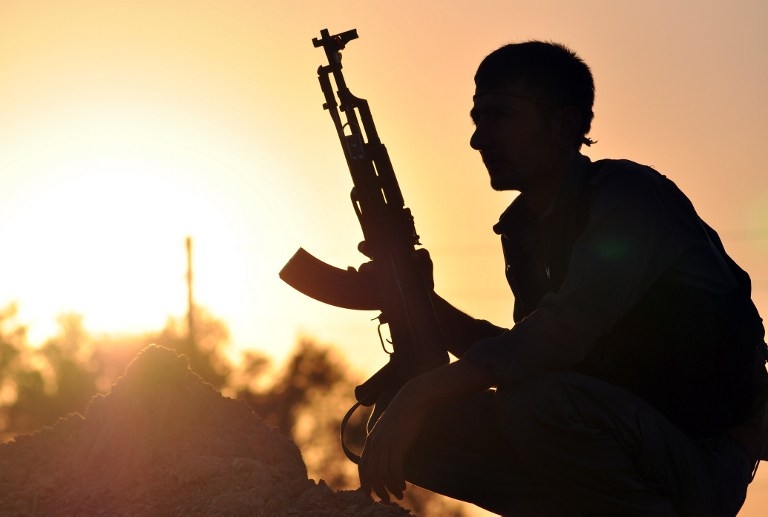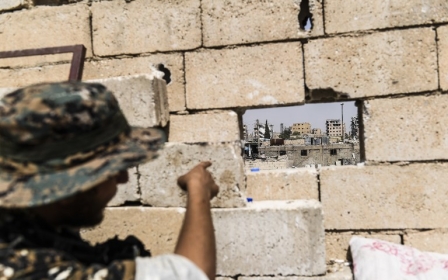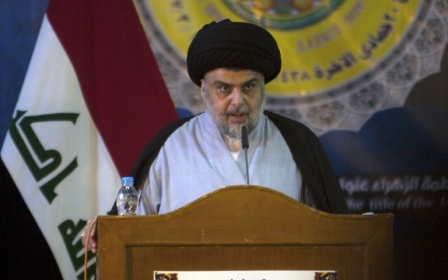Thousands of IS fighters cling on in Raqqa, pro-Assad forces bomb Hama

Around 2,000 Islamic State militants are estimated still to be inside Raqqa fighting to cling on to their former stronghold, as to the west of the country pro-Syrian government forces bombed an area in the province of Hama on Friday.
Brett McGurk, the US special envoy for the coalition against Islamic State, said the Syrian Democratic Forces had cleared about 45 percent of Raqqa since launching an attack in early June to seize Islamic State's stronghold in northern Syria.
"Today in Raqqa ISIS is fighting for every last block ... and fighting for their own survival," McGurk told reporters.
Some 2,000 ISIS fighters are left in the city and "most likely will die in Raqqa," he said.
The assault on Raqqa coincided with the final stages of a campaign to drive Islamic State from the Iraqi city of Mosul, where the IS militants were defeated last month.
McGurk said Islamic State has lost 27,000 square miles (70,000 sq km) of the territory it once held in the two countries - 78 percent of what they had seized in Iraq and 58 percent of what they had held in Syria.
Before every military operation, coalition forces surround the area targeted to make sure Islamic State's foreign fighters cannot escape and make their way out of Iraq and Syria, he said.
With the close cooperation of Turkish forces, the entire Syrian-Turkish border was sealed and Islamic State can no longer send militants trained in Syria for attacks in Europe and elsewhere, McGurk said.
The coalition has compiled a database of almost 19,000 names of Islamic State fighters gathered from mobile phones, address books and other documents found on battlefields which it is sharing with the international police agency Interpol, he said.
Islamic State is also fighting the forces of Syrian President Bashar al-Assad, who is backed by Russian air power and Iranian-backed militias.
McGurk said "deconfliction" arrangements the US and Russian militaries have made to avoid accidents, as they operate separately in Syria, were working well despite deteriorating diplomatic relations between the two countries.
President Donald Trump said on Thursday the US-Russian relationship was at "an all-time and very dangerous low," and Russia said new sanctions imposed by Washington meant an end to hopes for better ties with the Trump administration.
"So far we have not seen an effect on our engagement with the Russians when it comes to Syria," McGurk said.
Heavy fighting in Hama
The heaviest fighting and shelling for months meanwhile hit Hama province in northwest Syria on Friday, a war monitor said, but there were diverging accounts of how the battle started.
Clashes were accompanied by heavy bombardment, with dozens of shells and rockets being fired, said the Britain-based Syrian Observatory for Human Rights, adding that it had confirmed there had been casualties.
The battle is around the village of Maan, 23km north of Hama, near the location of a rebel assault and government counter-offensive this spring.
The Observatory said the fighting arose from an attempt by pro-government forces to advance north from Maan into rebel territory.
A military media unit run by the government's ally Hezbollah, a Lebanese Shiite group, said it was rebels who tried to attack, but they were thwarted by the Syrian army.
Hardline groups, including the Tahrir al-Sham alliance which contains al-Qaeda's former Syrian affiliate Jabhat Fateh al-Sham, formerly known as al-Nusra Front, are present in the area.
The war front in northern Hama province has mostly been quiet since a de-escalation process, brokered by the government's ally Russia and rebel-backer Turkey took effect in early May.
The Syrian army's main focus since May has been its campaign in the east of the country against Islamic State.
Middle East Eye propose une couverture et une analyse indépendantes et incomparables du Moyen-Orient, de l’Afrique du Nord et d’autres régions du monde. Pour en savoir plus sur la reprise de ce contenu et les frais qui s’appliquent, veuillez remplir ce formulaire [en anglais]. Pour en savoir plus sur MEE, cliquez ici [en anglais].




